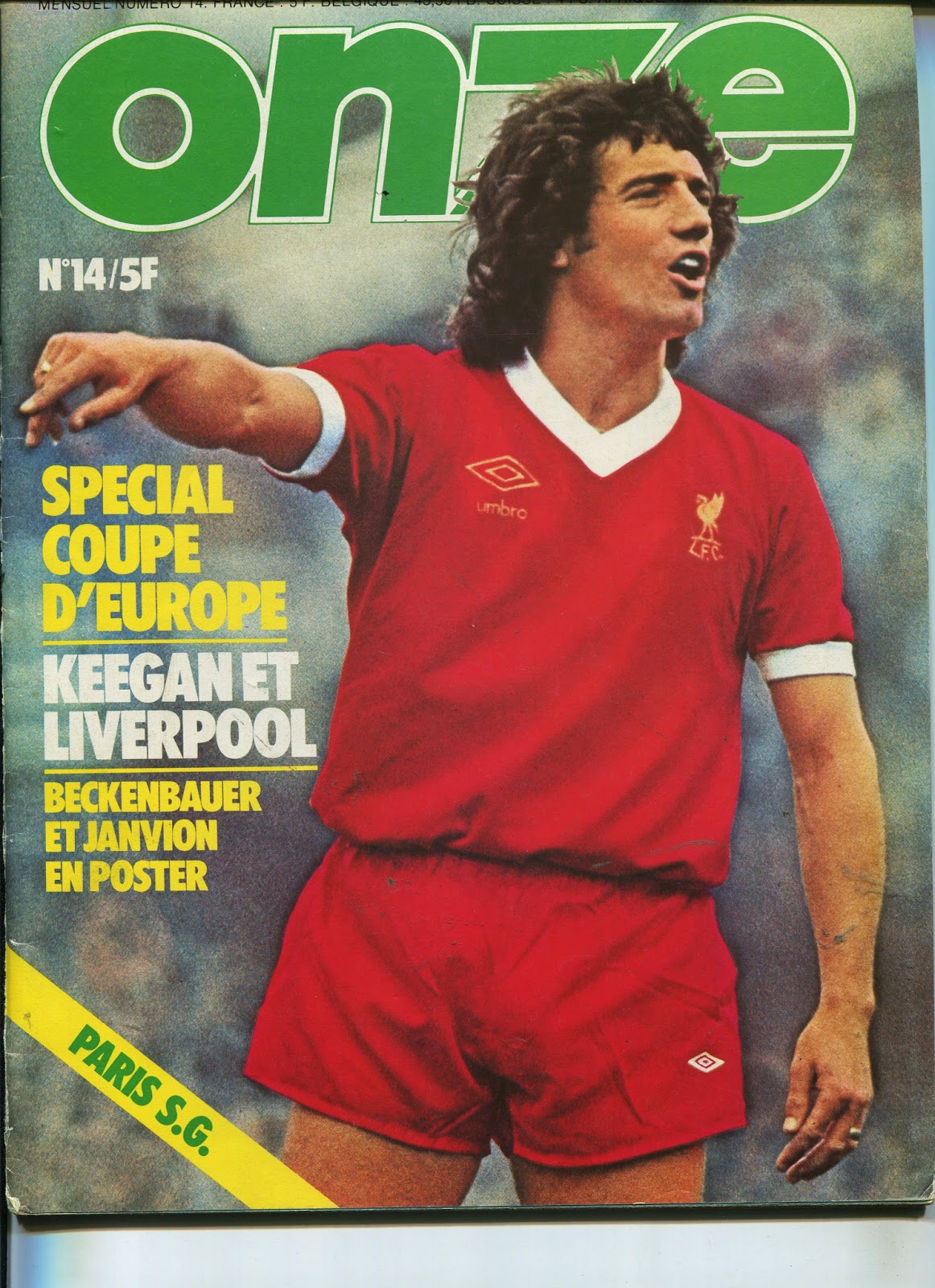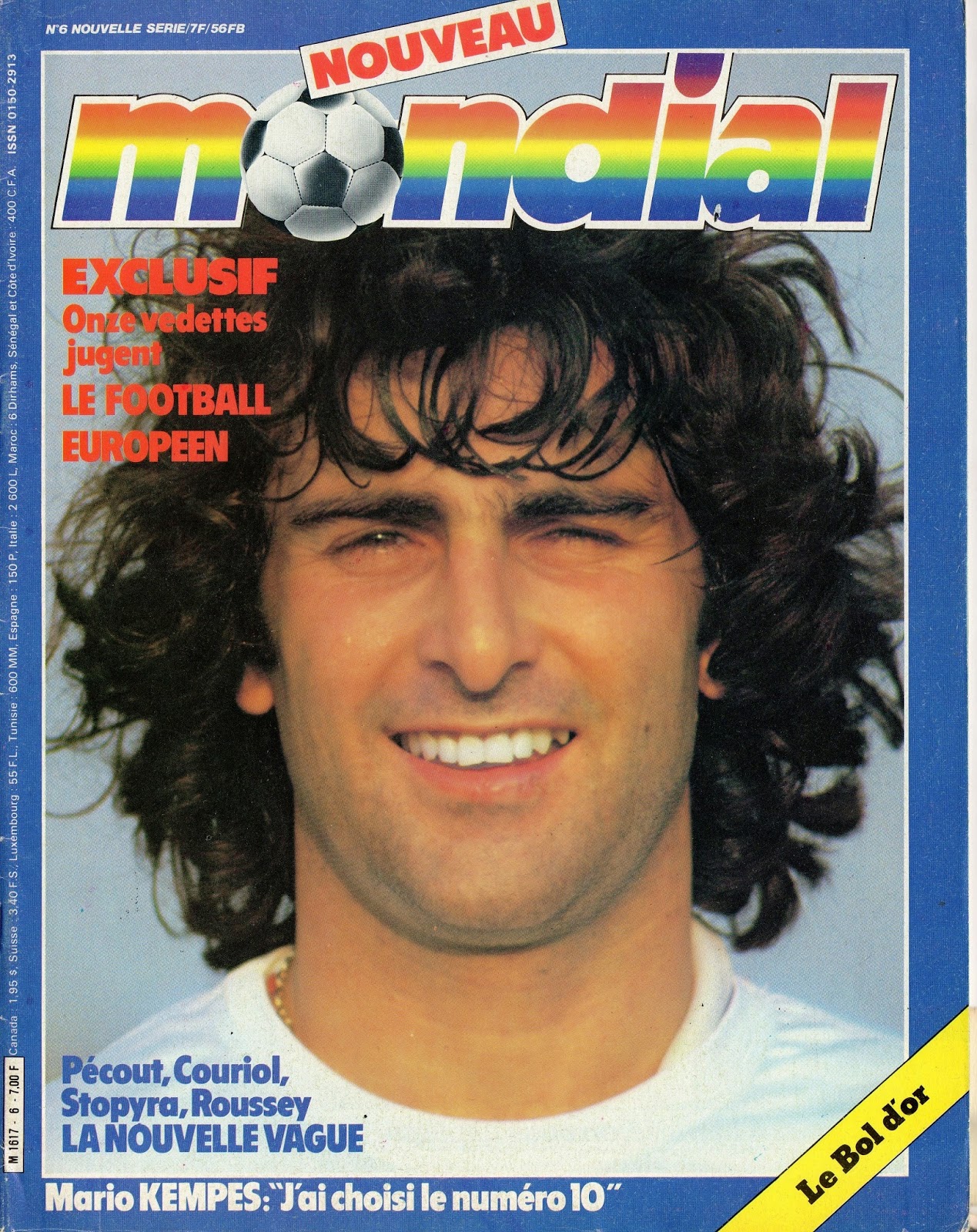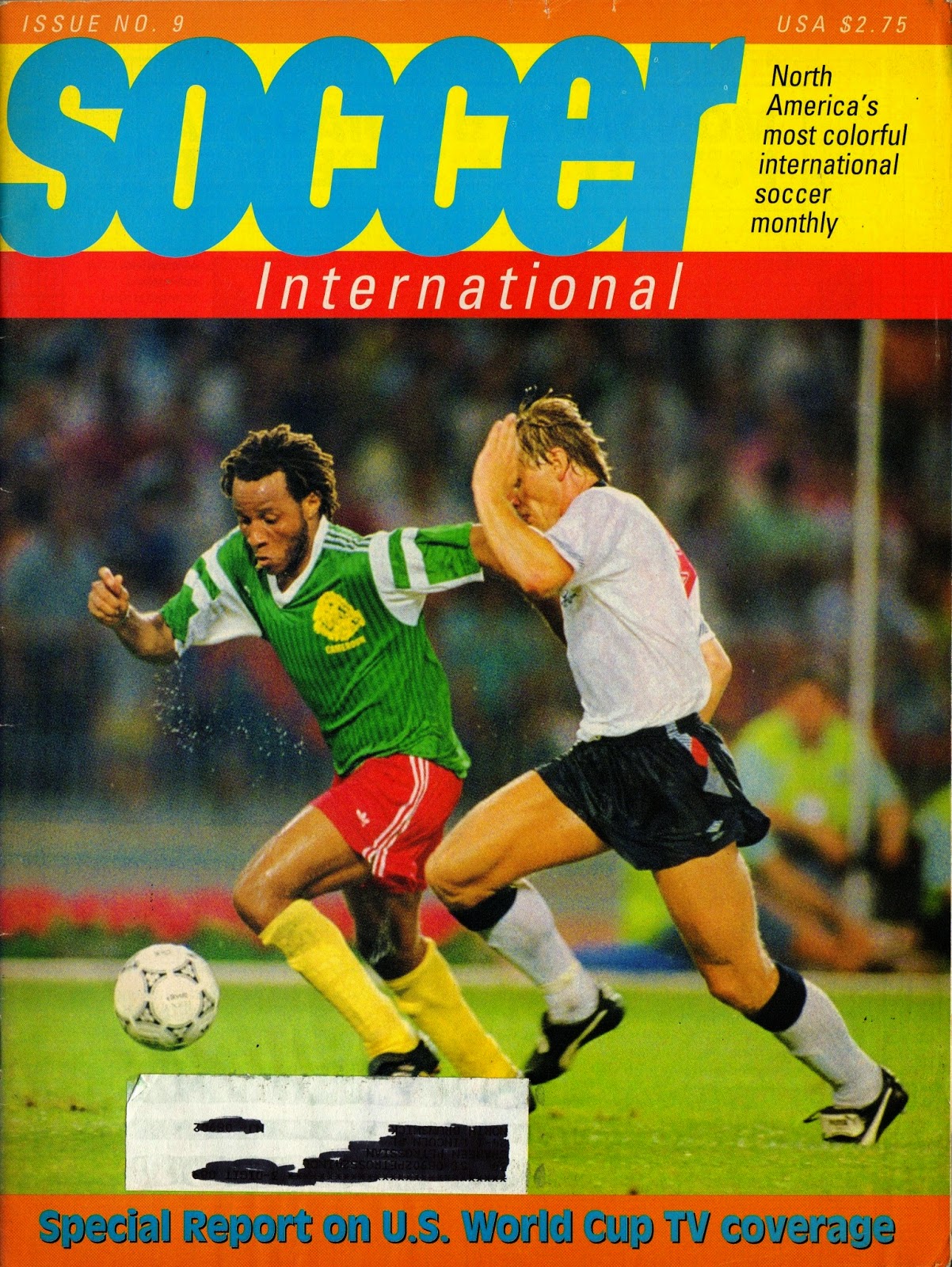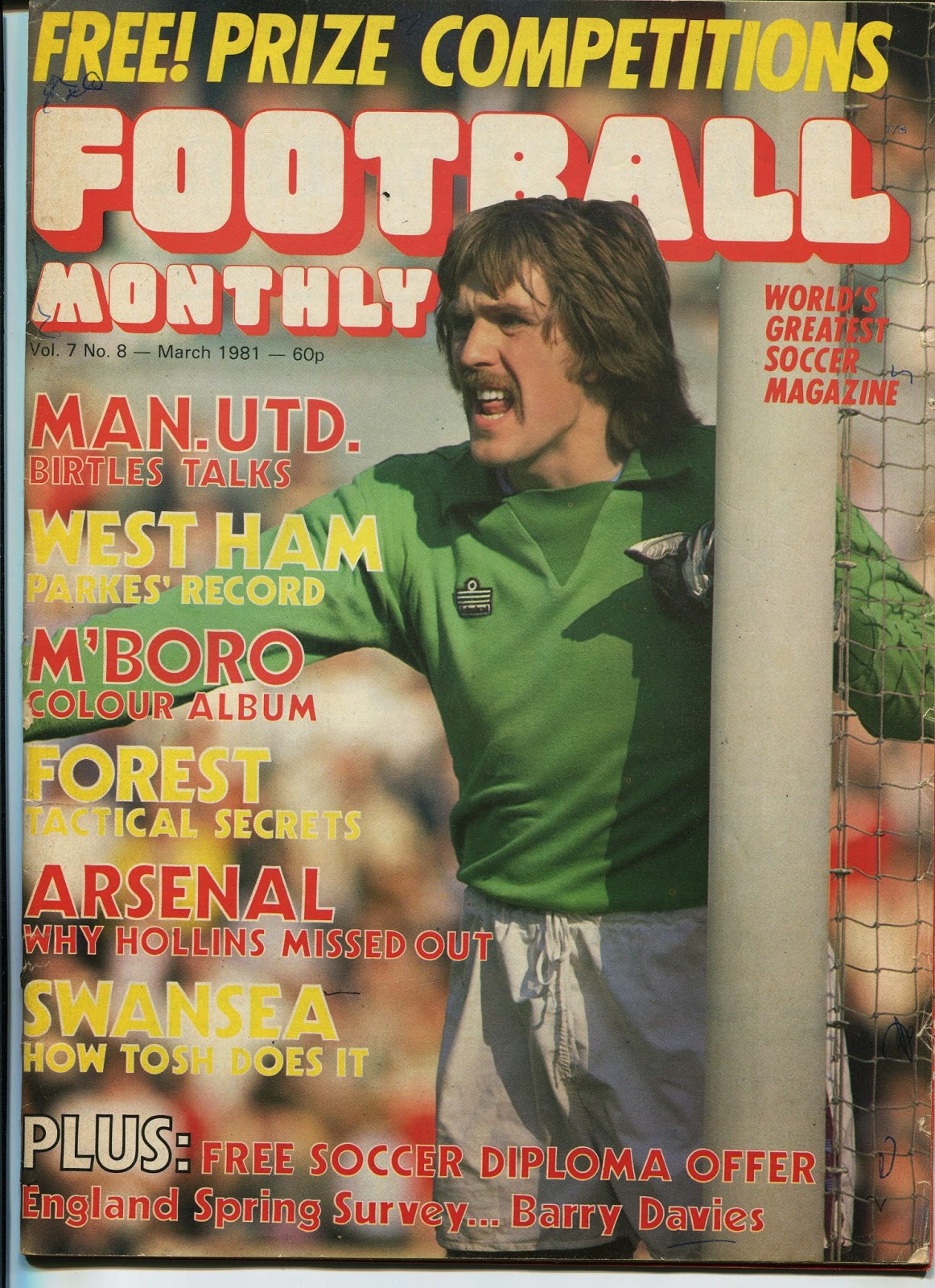The European Invasion of the Americas of the Summer of 1977
In the Summer of 1977, Argentina’s World Cup was one year away. Argentina as hosts, were condemned to Friendly matches in preparations for their World Cup.
To test themselves against worthy European Competition that they would surely be facing, the Argentine Federation invited many European nations to play vs. the national team that summer.
Argentina under the control of a Junta led by General Videla was beset by political problems and terrorism. There were questions about their ability to host the event. The authorities wanted to showcase these friendlies to display to the world, their competence and willingness to host the Main Event without any problems.
The European nations themselves were more than willing to partake on this Trans-Atlantic journey to get acquainted with the climatic conditions and the venues and the atmosphere they would be facing (provided they were lucky to qualify).
The teams in question were defending World Cup Champions West Germany, England, Poland, France, Scotland, Yugoslavia and East Germany.
The action was not only restricted in Argentina, most of these European nations chose to tour the continent as a whole, for these months of May, June and July.
Just about all of them arranged Friendlies vs. the continent’s powerhouse Brazil, as well as other South American nations (not to mention local clubs) along the way.
Argentina Manager Luis César Menotti was very keen on this endeavor. He wanted the National team to play many matches in a period of a month, to mirror World Cup Finals conditions, where one would have to play a minimum of seven matches to reach the Final. He also believed many friendlies were essential as a way of team and group building.
Menotti wanted to impose an attacking style of play for the National team. He wanted the National Team to play like his Huracan squad of 1973 that had won the title. Their (his) tactics consisted of Zonal defense and a short passing game.
He was at odds with the tactics of Boca Juniors Manager Juan Carlos Lorenzo. Though Boca Juniors were a successful side at the time, their style was the antithesis of Menotti. Though successful, Lorenzo’s Boca were a physical, defensive side.
Lorenzo had predicted that Menotti’s Argentina would fail and not be able to defeat any European side. According to Lorenzo, the game had changed in the past decade, and teams had to be more athletic and faster to win. (One could say Lorenzo was Menotti’s Bilardo of the next decade). In any case, Menotti’s desire seemed a tall order at a time, when only a handful of Argentinean clubs played with tactics resembling his.
Menotti had recently been successful in making the Argentinean Federation to pass a law forbidding potential National team players to be transferred to European Clubs until at least the end of the World Cup. The law had been passed too late to stop Norberto Alonso and Mario Kempes from joining Olympique Marseille and Valencia respectively. Menotti repeatedly stated that he would not call up any European based player; he did however acknowledge that Kempes would be the hardest player to replace. Nevertheless, as far as this 1977 summer was concerned, Kempes and all the other foreign-based players were out of World Cup contention.
The Argentina squad itself had a backbone of players, many of who would make the Finals squad by the following summer.
The squad included the eccentric goalkeeper Hugo Gatti, Captain Jorge Carrascosa, Alberto Tarantini, Jorge Olguin, Daniel Passarella, Osvaldo Ardiles, Ricardo Villa, Ricardo Bochini, Americo Gallego, Daniel Bertoni, Leopoldo Luque, René Houseman and Omar Larrosa.
Brazil for their part were preparing for their final phase of World Cup qualification to take place in July. The new Manager Claudio Coutinho had replaced Osvaldo Brandao in March. He publicly looked forward to the matches to test with ‘the best schools of European Football’. He considered Poland as the most dangerous opponent and then West Germany and England. He felt France were still not at their level yet. He wanted to try 4-3-3 that was employed by most Brazilian clubs. His squad contained stars such as goalkeeper Emerson Leao, Luis Pereira, Marinho, Edinho, Toninho Cerezo, Zico, Paulo Cesar, Roberto Dinamite, as well as veteran Roberto Rivellino.
The series of matches started on May 29th, with Argentina hosting Poland at Buenos Aires. Argentina chose Boca Juniors’ ‘La Bombonera’ as its venue for all their matches.
Jacek Gmoch’s Poland squad were comfortably set to qualify for the World Cup and were one of the finest teams in Europe at the time.
The squad had many leftovers from the glorious 1974 squad, including Captain Kazimierz Deyna, penalty stopping goalkeeper Jan Tomaszewski, Władysław Żmuda, Grzegorz Lato, Andrzej Szarmach and Henryk Kasperczak. The new rising star was Zbigniew Boniek who in time would become an international star.
Poland had arrived at Argentina just the day before the match. They were the better team in the first half and scored first through Lato in the 32ndminute.
Just before halftime, Argentina was awarded a penalty kick, which was scored by Daniel Bertoni, after a handball offense in the box.
Argentina was missing René Houseman, who had been suspended by his club Huracan for indiscipline. They gradually took control in the second half, as fatigue caught up with the Polish. First Leopoldo Luque and then midway through the second half Daniel Bertoni scored again for a convincing (3-1) win.
![]() |
Photo From : EL GRAFICO Nº 3008 (31-5-1977) (Leopoldo Luque, May 29, 1977, Argentina 3-Poland 1) |
The defending World Cup Champions West Germany was the next team to visit the hosts at ‘La Bombonera’ on June 5th. West German Manager Helmut Schoen had to contend with the loss of inspirational Captain Franz Beckenbauer to the NASL’s New York Cosmos. Berti Vogts, ‘Der Terrier’, was the new Captain, with veterans such as goalkeeper Sepp Maier, Rainer Bonhof and Bernd Holzenbein leading a squad that included many new youngsters such as Manfred Kaltz, Karl-Heinz Rummenigge and Rudiger Abramczik. They could no longer count upon Gerd Muller to score goals at will, however, many had high hopes for his namesake Dieter Muller and Klaus Fischer.
As far as the match itself, the Germans (wearing green) dominated the hosts with Fischer scoring twice and Holzenbein delivering the third, before Daniel Passarella scored a consolation goal. The Germans were in total domination and the crowd applauded them at the end and were praised by the Argentinean media for their display.
![]() |
Photo From : EL GRAFICO Nº 3009 (07-06-1977) (June 5, 1977, Argentina 1-West Germany 3) |
Three days later on June 8th, West Germany defeated a listless and uninspired Uruguay (2-0) at Montevideo’s Estadio Centenario, with goals by Heinz Flohe, early in the second half, and Dieter Muller at the death. Uruguay had already been eliminated from the World Cup qualifiers, as a result they were dejected and not much could have been expected of them.
On the same day, Brazil hosted England at Rio’s Maracana Stadium. All was not well in the English Camp. In the previous week they had been defeated twice at Wembley to Wales and Scotland in the Home Championship. The Scotland match was marred by the Scottish fans’ invasion of the pitch and the destruction of the goalposts. The talking point had been star Kevin Keegan’s recent transfer from Liverpool to SV Hamburg. World Cup qualification seemed bleak with Italy seemingly in the driver’s seat. In fact for this match vs. Brazil, England Manager Don Revie had to miss to go to Helsinki to watch the qualifier between Finland and Italy. Of course, there was more to this trip for Revie, which transpired later (that we shall get to), but Italy’s (3-0) win effectively dashed England’s hopes. With Revie absent, Les Cocker was in charge to pick a squad that in addition to Keegan, contained the likes of goalkeeper Ray Clemence, Phil Neal, Trevor Cherry, Emlyn Hughes, Trevor Francis and Ray Wilkins to name a few. The day before the match Trevor Brooking was sent home due to injury.
England played well defensively and kept Brazil at bay. Rivellino, though impressive in this match, was unable to break the resilient English defense. Brazil mostly controlled the second half, but Ray Clemence made many fine saves to keep the match scoreless. Brazilian winger Gil was well guarded by Trevor Cherry and had no impact. Gil’s frustration was apparent when he openly complained that Coutinho was hampering him by playing him in the right wing. Brazil was whistled off the park by their own fans at the end of the match. This was the first time that England had not lost at Brazil.
Two days later on June 10th, Poland continued its tour by playing at Lima vs. Peru. They were fresher for that match and dominated the hosts from the start. Szarmach and Deyna scored within the first twenty minutes to give Poland a commanding lead. Luces pulled a goal back in the 62ndminute, however, just a minute later the impressive Kasperczak scored Poland’s third.
Two days later, June 12th turned out to be the busiest day on the continent as three matches were played. At LaPaz, Poland continued its fine form by defeating the hosts (2-1) with goals by Lato and Kapka in the 90thminute.
Brazil and West Germany tested one another at Maracana. The impressive West Germans were unfazed and held their own against the hosts. They scored first early in the second half through Fischer, however, with minutes remaining Rivellino, celebrating his 100th cap, evened the score.
![]() |
Photo From : Fussball Magazin, Issue 6, September October 1977 (Rudiger Abramczik and Rodrigues Neto, June 12, 1977, Brazil 1-West Germany 1) |
Most of the drama of the day occurred at ‘La Bombonera’ where Argentina hosted England. The atmosphere was tense, even before the match started. The Argentinean fans booed the English National Anthem. They chanted ‘Animals’, in reference to Alf Ramsey’s insult from the 1966 World Cup. They also chanted ‘Pirates’, in reference to the Falkland Islands dispute (that would eventually erupt into a war in 1982).
Argentina was still missing the suspended Houseman, but also Hugo Gatti, Jorge Carrascosa and Ricardo Villa.
England scored within two minutes when Stuart Pearson scored from Mick Channon’s near post cross. In the 15th minute, Brian Greenhoff fouled Daniel Bertoni near the edge of the box and Bertoni himself scored from the free kick. Otherwise, the match was a cautious defensive affair. Kevin Keegan rarely threatened and had no impact.
With ten minutes remaining, Trevor Cherry fouled Bertoni. When Bertoni got up he punched Terry and knocked some teeth out.
The pair, who had been booked before, were immediately sent off. The Argentinean Federation suspended Bertoni for four matches and also exonerated Cherry.
![]() |
Photo From : EL GRAFICO Nº 3010 (14-6-1977) (Daniel Bertoni scoring from a free kick, June 12, 1977, Argentina 1-England 1) |
On June 14th, West Germany continued its tour with a layover at Mexico. The somewhat tired Germans fell behind twice in the first half. They gradually got back in the game in the second half and Klaus Fischer scored twice to tie up the match.
England wrapped its tour the next day, June 15th, with a scoreless tie vs. the dispirited Uruguay squad at Montevideo. The scoreless draw was a continuation of England’s defensive tactics that many critics decried. Revie’s 4-4-2 tactics were roundly criticized and blamed for the unimpressive performances.
Both teams were booed off the field at the end. This match turned out to be the only match that Revie named an unchanged side.
On the same day, Scotland made their debut on the tour at Santiago vs. Chile. Chile had also been eliminated from the World Cup qualifiers and had arranged a team with little preparation. It was no surprise that they were defeated (4-2) with Kenny Dalglish, Lou Macari (twice) and Asa Hartford scoring. Scotland was coming off a victory in the Home Championship and had appointed Alistair Mc Leod as Manager just the previous month.
Three Days later, on June 18th, Scotland lined up vs. Argentina. Incidentally the Argentinean fans did not boo the same National Anthem that they had booed vs. England.
Just like the match vs. England, it was a tight match with many fouls and the result was one-all tie. Both sides scored their goals through penalty kicks. With less than 13 minutes remaining Scotland were awarded their penalty kick from which Donald Masson scored. Three minutes later Argentina were awarded a penalty kick of their own and Daniel Passarella scored. And just like the match vs. England two players were sent off. In the 56th minute, Argentina’s Vicente Pernia punched Scotland’s Willie Johnston in retaliation after a foul. Both players were sent off.
Menotti, in uncharacteristic fashion, defended the violent tactics of his players.
![]() |
Photo From : World Soccer, August 1977 (June 18, 1977, Argentina 1-Scotland 1) |
The following day, June 19th, Poland ended its tour by playing Brazil at São Paulo. Zico and Roberto Dinamite were left out of the lineup, replaced by Paulo Isidoro and Reinaldo. Brazil was excellent for most of the match and deservedly scored through Paulo Isidoro and Reinaldo in the first half. Rivellino scored Brazil’s third from a penalty kick in the second half. Poland got back into the game towards the end and scored a consolation goal from Boniek.
![]() |
Photo From : Onze, Issue 27, March 1978 (Andrzej Szarmach and Toninho Cerezo, June 19, 1977, Brazil 3-Poland 1) |
A few days later, on June 23rd, Scotland finished its own tour by visiting Brazil at Maracana. They held out bravely against Brazil before succumbing to a Zico free kick with twenty minutes remaining. Rivellino scored Brazil’s second five minutes later.
On June 26th, France and Yugoslavia made their first appearances. Yugoslavia faced Brazil at Belo Horizonte and almost won with Ivica Surjak particularly impressive. Yugoslavia was better in the first half, with Brazil gradually asserting themselves in the second half but unable to break the Yugoslav defense. Claudio Coutinho described this as Brazil’s hardest match of the tour. Brazil was predictably whistled off the field at the end.
Michel Hidalgo’s rejuvenated France squad was led by skipper Henri Michel and Libero Marius Tresor. Nancy’s Michel Platini and other youngsters such as Patrick Battiston, Maxime Bossis and Didier Six represented the new generation.
Many French managers, most notably Saint Etienne’s Robert Herbin, had been opposed to this grueling tour at the end of the season. Herbin was particularly concerned about his players Christian Lopez and Dominique Bathenay, who were exhausted.
However, Hidalgo insisted it was necessary and an opportunity not to be missed for the experience and the preparations of the national team.
Against the hosts Argentina, France was in better shape and pressed Argentina. The French were the better side in the first half, in the second half, Ricardo Villa and Houseman pressed the French harder but to no avail. Though the match ended scoreless, France had looked better. The French camp was surprised as they expected a stiffer test. Platini described the Argentina squad as too static and lacking the quality of surprise to worry most European teams.
Argentinean Press tried in vain to make Hidalgo give reasons why Argentina were playing poorly, however, Hidalgo limited his responses on his own squad.
![]() |
Photo From : Mondial, Old Series, Issue 6, July 1977 (Olivier Rouyer between Jorge Carrascosa and Daniel Killer, June 26, 1977, Argentina 0-France 0) |
The most exciting match of the tour was four days later at Maracana when Brazil took on France.
Before the match Hidalgo had stated that France had come in all modesty to learn from this tour, while Coutinho emphasized that Brazil had to earn back its colors and pride.
Brazil started the match in strong fashion, especially Cerezo. Not surprisingly, given their domination, Edinho scored Brazil’s first goal in the 30thminute. However, after the goal Brazil appeared to take their foot off the pedal. Hidalgo had remarked this and urged his team to attack as he sensed Brazil were tiring. However, Brazil scored again early in the second half through Roberto Dinamite and Hidalgo’s plan seemed to have backfired. Undeterred he urged his squad to continue attacking. In the next minute, Didier Six scored a spectacular effort from long range to give France some hope (some time later, Didier Six admitted he had used his hand to control the ball).
The goal spurred France on and they continued attacking. With five minutes left, Olivier Rouyer took a corner, which was headed in by Marius Tresor. The Brazilian public was taken by France’s audacity and applauded Tresor. At the end of the match, the public even chanted ‘França, França’.
The overjoyed Hidalgo was very emotional with these chants and described this match as France’s best since the 1958 World Cup.
![]() |
Photo From : Mondial, Old Series, Issue 6, July 1977 (Paulo Isidoro and Omar Sahnoun, June 30, 1977, Brazil 2-France 2) |
A few days later on July 3rd, a tired France concluded its tour with a loss (1-3) against Brazilian club Atlético Mineiro.
On the same day, Argentina hosted Yugoslavia in another tight affair and only won with a penalty kick by Passarella in the first half.
![]() |
Photo From : EL GRAFICO Nº 3013 (05-7-1977) (Ruben Galvan, July 3, 1977, Argentina 1-Yugoslavia 0) |
On July 12th, the series of Friendlies ended when Argentina hosted East Germany (in its only match of the tour). Argentina ended the summer on a positive note with a much-improved performance in defense and won (2-0) with goals by Houseman and Carrascosa.
![]() |
Photo From : EL GRAFICO Nº 3015 (19-7-1977) (Oscar Ortiz, July 3, 1977, Argentina 2-East Germany 0) |
So what were the lessons learned? The Argentinean public was disappointed with its team. The press in particular was opposed to Menotti’s tactics and the violent fouls in the England and Scotland matches. During all their matches played at ‘La Bombonera’, the public chanted for the appointment of Juan Carlos Lorenzo of the successful Boca team. As far as the World Cup Finals, the Argentinean Federation chose to select River Plate’s Stadium (El Monumental) as its venue for home matches.
Even though, Menotti had vowed he would not select foreign-based players, the squad’s limitations forced him to make a concession on that principle. He stated he would have to call up at least a few of the foreign-based players with Mario Kempes on the top of the list.
Given Menotti’s preaching of beautiful, attacking Football, it was ironic how violent they were in some of these matches. This carried over into the World Cup the following year, with the shameful display that led to the sending offs of Andras Torocsik and Tibor Nylasi, as well as the physical battle with Brazil, not to mention the gamesmanship used in the Final concerning Dutchman Rene van der Kerkhof’s plaster cast on his arm (Leaving out the 6-0 Peru win and all the conspiracy theories surrounding it).
It’s also strange, given Menotti’s image of a free and open thinker, that his training camps were like Army barracks. This may have led to the exclusion of Hugo Gatti. His refusal to join a training camp in February 1978 to recuperate from an injury sealed his fate and Ubaldo Fillol replaced him. These training camps were also too much for Captain Jorge Carrascosa who left the squad on his own accord. The reason that he gave was that ‘His Parents had earned the right to see their son’, not to mention his wife was due to give birth during the Finals. There were also reports that both players were at odds with the Federation over bonus payments.
As far as Brazil, the general analysis was that they lacked a genuine center forward. Though Rivellino was impressive that summer, by the following year he would be a spent force. By the time of the World Cup, Claudio Coutinho, much like Mario Zagallo with the 1974 team, was attempting to ‘Europeanize’ the team’s tactics. Coutinho would sadly be killed in 1981 in a scuba diving accident.
Of all the team on tour, West Germany was the most impressive. Klaus Fischer received much praise, as did Holzenbein and Abramczik. The duo of Manfred Kaltz and Rolf Russman seemed to have been able replacements for Beckenbauer and Georg Schwarzenbeck. However, by the time of the World Cup, the loss of Beckenbauer would be sorely felt and in contrast to this tour the Germans ended up having a poor World Cup.
Poland in general lived up to their reputation with Henryk Kasperczak as the pick of the bunch.
Scotland gave a positive impression on this tour, with goalkeeper Alan Rough voted by the Scottish press as their best player.
By the time of the World Cup, a false sense of security and confidence had set in. They entered the World Cup as an outside bet, however were shellacked by Peru and were unable to defeat Iran. The unlucky Willie Johnston, who was punched and sent off in this tour, had an even worse World Cup, when he failed a dope test and was suspended.
France gave a good impression, though they were still years sway from being a great side.
England ended up having an eventful summer especially off the field. At the beginning of the tour, Don Revie was supposedly away supervising World Cup qualifying group opponents Finland and Italy. However it was discovered by ‘Daily Mail’ that he was in fact negotiating with officials from the United Arab Emirates. Revie was banned for breach of contract and in his place Ron Greenwood was appointed.
For a (Non-World Cup) summer, an entire continent was witness to a feast of football, where lessons were learned (perhaps).
In a way this comprehensive tour was a precursor to mini tournaments that World Cup hosts usually hold a year ahead of the Tournament as a dress rehearsal (These days the Confederations Cup fills that role).
The Sequence of Matches:
May 29, 1977- Buenos Aires, (La Bombonera)-Argentina 3-Poland 1
June 5, 1977- Buenos Aires, (La Bombonera)-Argentina 1-West Germany 3
June 8, 1977- Montevideo, (Estadio Centenario)-Uruguay 0-West Germany 2
June 8, 1977- Rio de Janeiro, (Estádio do Maracanã)-Brazil 0-England 0
June 10, 1977- Lima, (Estadio Nacional)-Peru 1-Poland 3
June 12, 1977- Buenos Aires, (La Bombonera)-Argentina 1-England 1
June 12, 1977- La Paz, (Estadio Libertador S.Bolivar)-Bolivia 1-Poland 2
June 12, 1977- Rio de Janeiro, (Estádio do Maracanã)-Brazil 1-West Germany 1
June 14, 1977- Mexico City, (Estadio Azteca)-Mexico 2-West Germany 2
June 15, 1977- Montevideo, (Estadio Centenario)-Uruguay 0-England 0
June 15, 1977- Santiago, (Estadio Nacional)-Chile 2-Scotland 4
June 18, 1977- Buenos Aires, (La Bombonera)-Argentina 1-Scotland 1
June 19, 1977- São Paulo, (Estadio Morumbi)-Brazil 3-Poland 1
June 23, 1977- Rio de Janeiro, (Estádio do Maracanã)-Brazil 2-Scotland 0
June 26, 1977- Belo Horizonte, (Estádio Mineirão)-Brazil 0-Yugoslavia 0
June 26, 1977- Buenos Aires, (La Bombonera)-Argentina 0-France 0
June 30, 1977- Rio de Janeiro, (Estádio do Maracanã)-Brazil 2-France 2
July 3, 1977- Belo Horizonte, (Estádio Mineirão)- Atlético Mineiro- (Brazil) 3-France 1
July 3, 1977- Buenos Aires, (La Bombonera)-Argentina 1-Yugoslavia 0
July 12, 1977- Buenos Aires, (La Bombonera)-Argentina 2-East Germany 0

































































































































.jpg)




































.jpg)















































